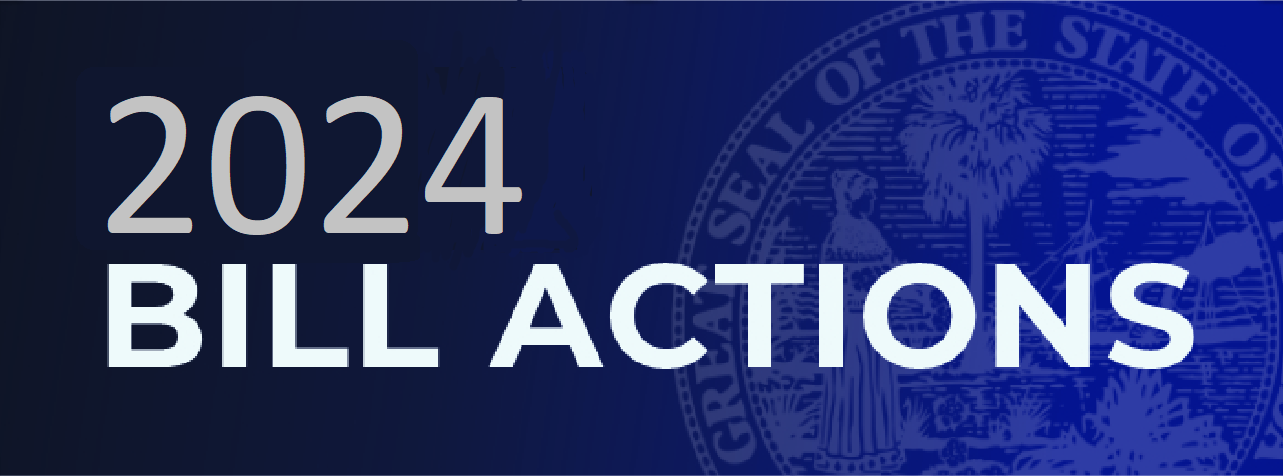Calls on Biden Administration to Include $725 Million for South Florida Ecosystem Restoration
Hobe Sound, Fla. – Today, Governor Ron DeSantis was joined by Florida Department of Environmental Protection (DEP) Secretary Noah Valenstein and the South Florida Water Management District (SFWMD) Board of Directors on a visit to Lake Okeechobee and the Caloosahatchee and St. Lucie rivers to observe current conditions. This visit comes as the U.S. Army Corps of Engineers works to finalize a new water control manual, the Lake Okeechobee System Operating Manual (LOSOM), for Lake Okeechobee.
The Governor urged the U.S. Army Corps to improve lake management to make more beneficial releases and send more water south during Florida’s dry season and to allow for flexibility to avoid harmful discharges in Florida’s northern estuaries. Reducing harmful discharges to the Caloosahatchee and St. Lucie rivers is critical for water quality in these vital ecosystems. Additionally, Governor DeSantis joined Florida’s bi-partisan congressional delegation in calling on the Biden administration to invest $725 million for South Florida Ecosystem Restoration to ensure critical Everglades restoration projects are completed as expeditiously as possible.
“In Florida, we are doing our part to expedite Everglades restoration projects and restore the flow of water south from Lake Okeechobee. Under my administration, we have expedited the EAA Reservoir Project, begun constructing the Stormwater Treatment Area 12 months ahead of schedule, and invested over $2 billion in water quality and Everglades funding,” said Governor DeSantis. “The U.S. Army Corps of Engineers is developing a new water control manual for Lake Okeechobee, and they must allow flexibility in the management to avoid harmful discharges in our estuaries and send more water south during Florida’s dry season. Status quo lake management is not an option.”
“Under the leadership of Governor DeSantis, the state has made great strides in advancing Everglades restoration projects that will restore the natural flow of clean water through the Everglades and send more water south to where it’s needed most. However, it is also vital that the Corps works in concert with the state of Florida to ensure Lake Okeechobee water levels are managed in a manner that puts us in the best position to avoid harmful summertime discharges to the northern estuaries,” said DEP Secretary Noah Valenstein.
“I appreciate Governor DeSantis’ leadership to call for improved Lake Okeechobee management by the Corps and increased funding for Everglades restoration,” said Chauncey Goss, Chairman of the South Florida Water Management District and a resident of Sanibel. “We’ve seen firsthand the impact that harmful Lake Okeechobee discharges have on Floridians’ lives and businesses. The status quo of lake management that views our estuary communities as dumping grounds for excess water cannot continue. While Florida prioritizes moving water south to the Everglades and away from our estuaries, the U.S. Army Corps must ensure Lake Okeechobee management supports our ongoing Everglades restoration efforts while avoiding harmful estuary discharges.”
“Moving more water south during the dry season will help meet the water needs of South Florida’s growing population and provide much-needed freshwater for the Everglades and Florida Bay. Sending water south from Lake Okeechobee will also have a profound effect on reducing the releases of harmful algal blooms to the St. Lucie and Caloosahatchee estuaries. We commend Governor DeSantis for his leadership in ensuring water fairness for all of South Florida’s water needs and urge the Corps to adopt a more equitable schedule that meets the growing needs of Florida’s 21st century economy,” said Eric Eikenberg, CEO of The Everglades Foundation.
“Local economies have been crippled by inequitable water management for decades. Through this LOSOM process, it’s imperative that the Corps develops a plan that represents and benefits all stakeholders, including the Caloosahatchee and St. Lucie estuaries. To do that, the Corps has to improve the current release schedule and prioritize sending more water south—especially during the dry season to the Everglades and the environment—to reduce harmful discharges to the coasts during the wet season. Governor DeSantis fully understands this need to incorporate our taxpayer-funded water infrastructure into benefiting all Floridians and the natural resources, and we applaud his demand to the Corps to include those priorities in LOSOM,” said Capt. Daniel Andrews, Executive Director of Captains for Clean Water.
“The stark reminder that our job is not yet done is evident in the Harmful Algal Blooms spreading across the Lake Okeechobee system,” said Jim McDuffie, President and CEO of Bonefish & Tarpon Trust. “It threatens the health of our people and communities, our world-class fisheries, and the economic drivers of a vibrant travel and tourism industry. We applaud Governor Ron DeSantis for his leadership and commitment to send more water south to the Everglades and to reduce harmful discharges to our estuaries. It is imperative that we manage Lake Okeechobee to meet these objectives while also calling for expedited federal action to fully fund all authorized Everglades restoration projects.”
In Governor DeSantis’ first week in office, he signed Executive Order 19-12 to Achieve More Now for Florida’s Environment, which prioritized expediting key Everglades projects, including the critical Everglades Agricultural Area (EAA) Reservoir Project, which is crucial for reducing harmful discharges to the northern estuaries and sending more clean water south to the Everglades. The SFWMD began constructing the Stormwater Treatment Area component of the project 12 months ahead of schedule. Last month, the SFWMD executed a Project Partnership Agreement with the U.S. Army Corps of Engineers, which will allow the U.S. Army Corps to begin construction of the 10,500 acre above-ground water storage reservoir this year. In the last two years, final phases of construction for the Caloosahatchee (C-43) Reservoir and the C-44 Reservoir were initiated.
Additionally, over the last three years Governor DeSantis has secured more than $2 billion in Everglades restoration and water quality funding, keeping Florida on track to meet the $2.5 billion goal over four years. This state funding includes $30 million to deploy innovative technologies to combat algal blooms in Lake Okeechobee and the estuaries.
###
.jpg)






.jpg)
